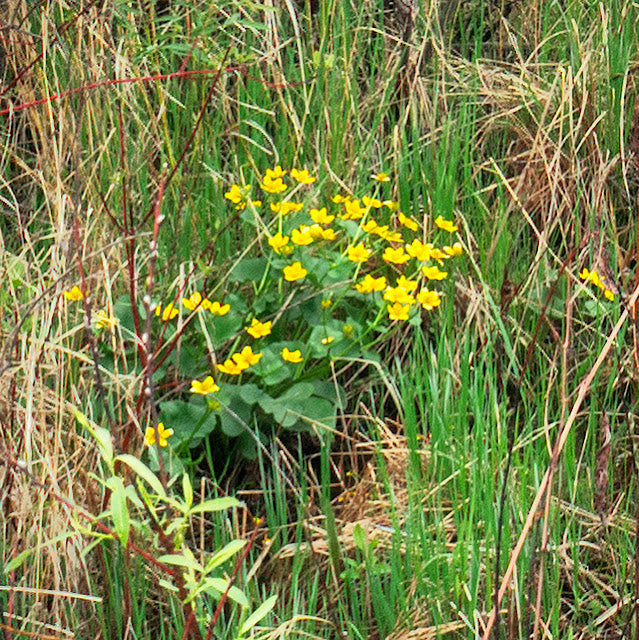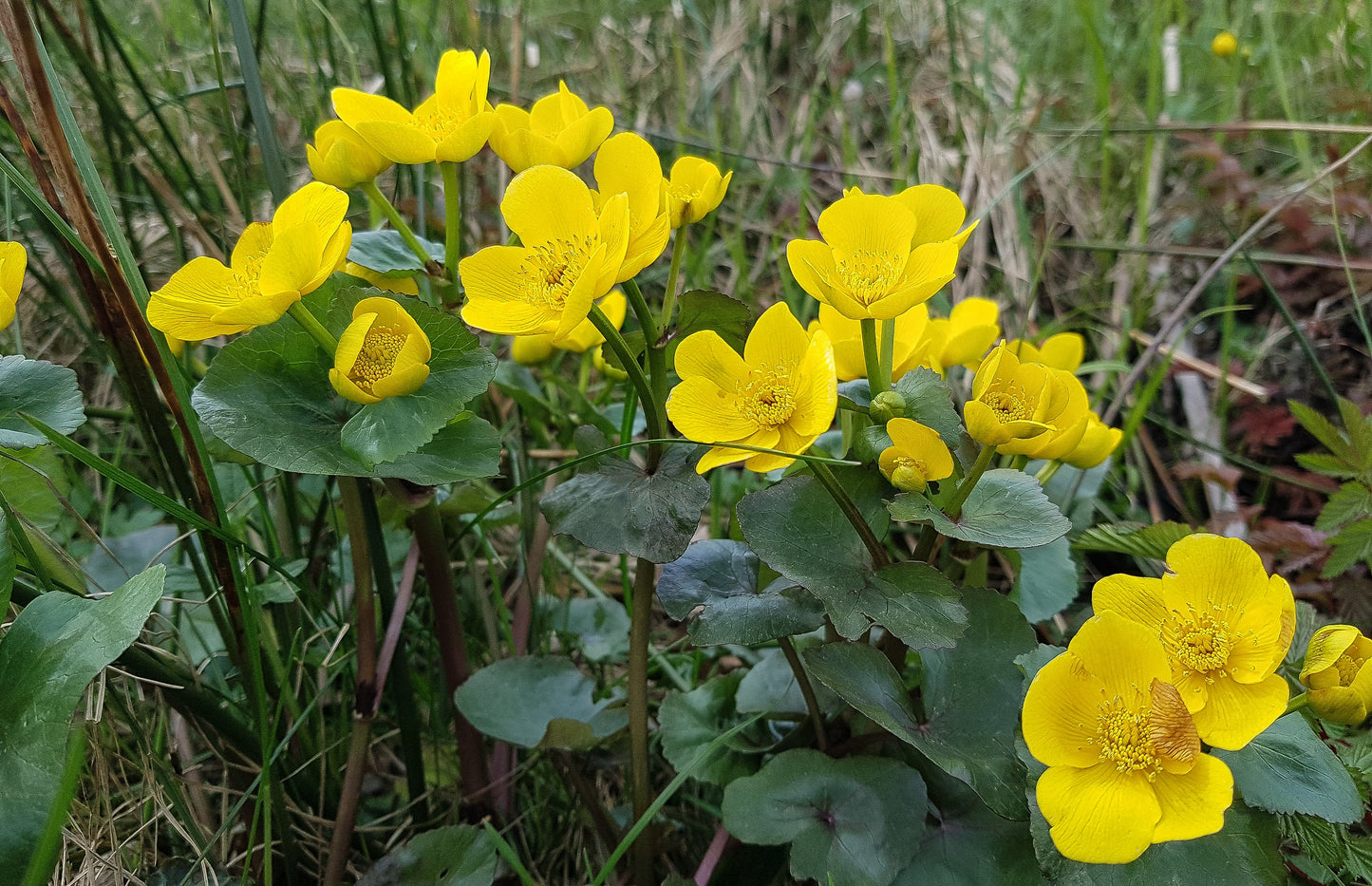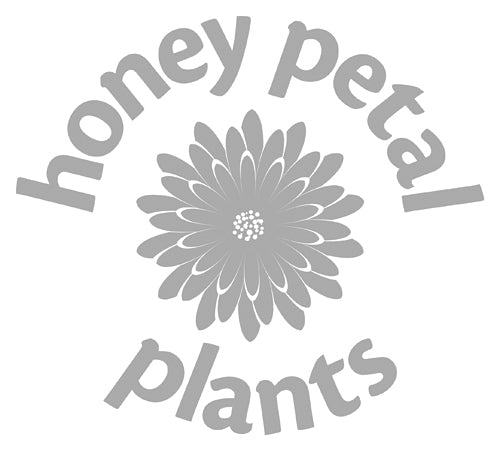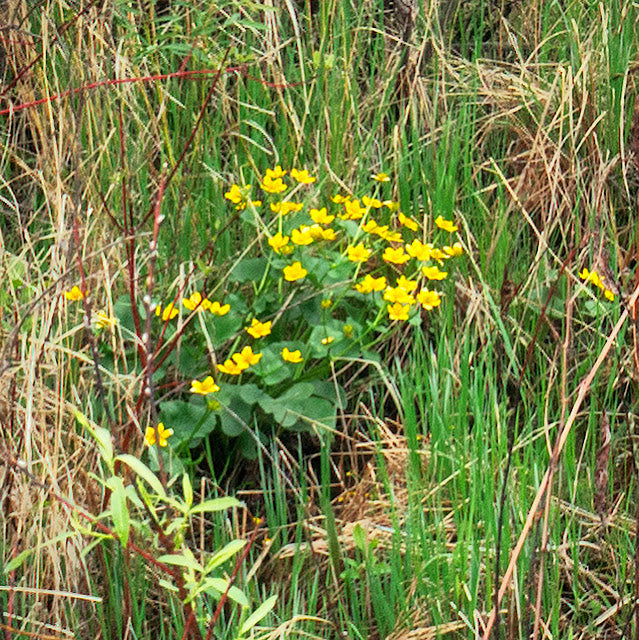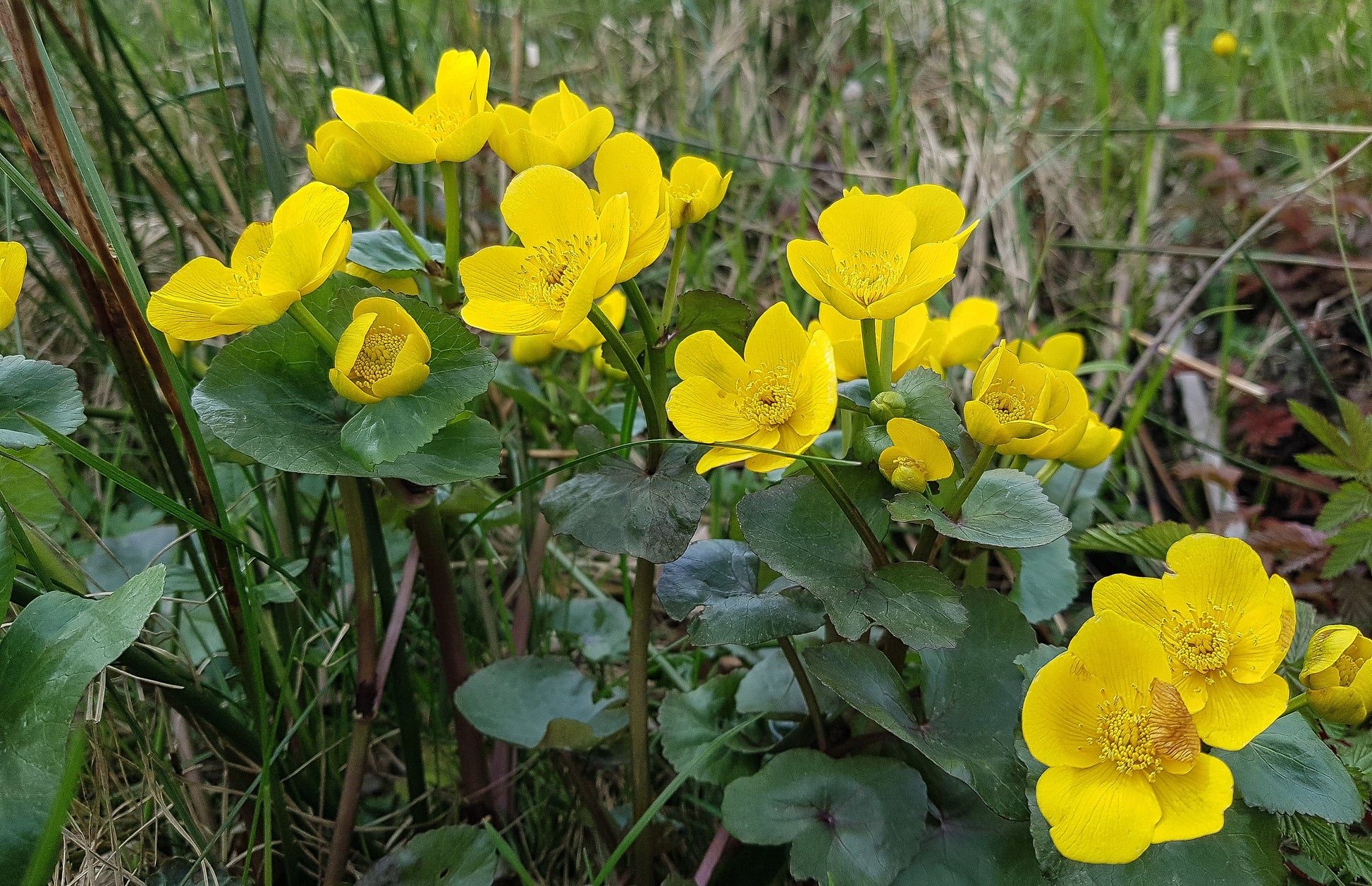Honey Petal Plants
Caltha palustris - Marsh Marigold
Caltha palustris - Marsh Marigold
Couldn't load pickup availability
Sizes available: 2 quart
Basics: Zone 3-7, 12-18" x 12-18", full sun to part shade, yellow bloom in early spring, prefers moist, somewhat acidic, fertile soils or oxygen-rich water
Common names: Swamp Marigold, Marsh Marigold, Kingcup (also see below for more!)
Family: Ranunculaceae
Origin/Distribution: This plant appears in the temperate northern hemisphere in numerous closely associated variations. It is native to the northeastern U.S. including Maine.
Habitat: wet edges, wet open woods, wet meadows, swamps, bogs, marshes, fens, wet ditches, in between reeds at lake and river edge. Found in Black Alder coppices and regularly-flooded, always moist places.
More: Caltha palustris contains nectar and lots of pollen and is an excellent food source for numerous insects early in the season. It can also be rain-pollinated and the seeds rain-dispersed and/or distributed by floating on moving water. It is a joy to see the bright yellow flowers after a long winter. The young leaves and buds are edible cooked, with a couple of water-changes. A more promising experience might be cooking and pickling the buds for a garnish. There is potential for contact dermatitis and the plant is toxic if eaten raw. The leaves and roots have been used medicinally. The leaves of this plant can be confused with the leaves of Veratrum viride, False Hellebore, which is fatally toxic in all parts.
Even more: This plant is mentioned in numerous poems and works of fiction (see the lengthy Wikipedia entry for more). In the U.K. Caltha palustris has many names: Bassinets, Crazy Beth, Horse Blob, Molly-blob, May Blob, Boots, Water Boots, Meadow-bright, Bullflower, Meadow Buttercup, Water Buttercup, Soldier's Buttons, Meadow or Water Cowslip, Publican's Cloak or Publicans-and-Sinners, Crowfoot, Water Dragon, Drunkards, Water Goggles, Meadow, Water or Yellow Gowan, Goldes, Golds, Goldings, Gools, Cowlily, Marybuds.
Nursery: Van Berkum
Photo credits: Frank Meuschke of Shelterwood Gardens; also Wikimedia Commons
